Early in the spring of the year, as the pack ice recedes and clears the strait, lobster fishers and their families busily prepare for setting day, the first day that traps are set offshore in the new fishing season. The classic Northumberlands, the familiar fishing craft of Atlantic Canada, are moved from their shipping-pallet perches on lawns and side fields and are slipped stern-first back into inky, frigid water.
Each 44-foot boat is carefully checked over and packed 8 feet high with up to 150 lobster traps and kilometres of rope. Crews carefully plan two trips per boat to set their traps.
This time of year is especially harsh along the PEI coastline. Steel-grey skies and cold offshore winds provide a sombre backdrop to the energy and bustle of the busy ports. As crew families gather on the docks at 6 a.m. for the send-off, the setting is painfully familiar and also brand new, every time. Every setting day includes a new crew — grandkids and cousins, some still in high school. Joining a crew is a quiet coming of age; most have stood on the dock this chilly day every year since before they can remember. Fishers say it’s in their DNA; they are drawn to the opportunity on water, mindful of the risk.
Senior captains know the seafloor like the back of their weathered hands. They pass on their knowledge and wisdom by presence. Even the young ones know that no new tech can match the knowledge and skill of a captain who has spent a lifetime on the water, often navigating home on rough seas guided only by lining up church steeples on the thin line of the horizon.
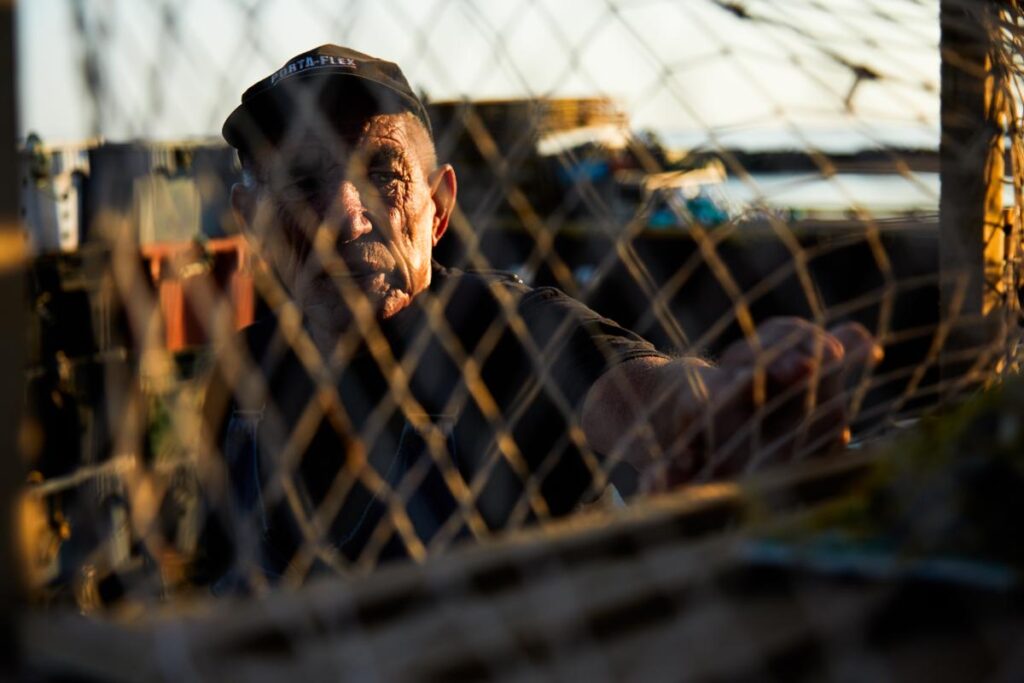
Everyone has a story of loss. No two are the same, except how each experience deepens the relationships among family and friends and strengthens the resolve to continue to ply the depths for this precious, yet bountiful, catch.
Setting day is a family tradition going back generations. The first day of the new season is often cold. Still, families gather huddled on docks to see the crews off. There is an air of mindful anticipation, strong conviction and pride. Even the kids know: lobster fishing is in their DNA. One day they, too, will take to the sea.
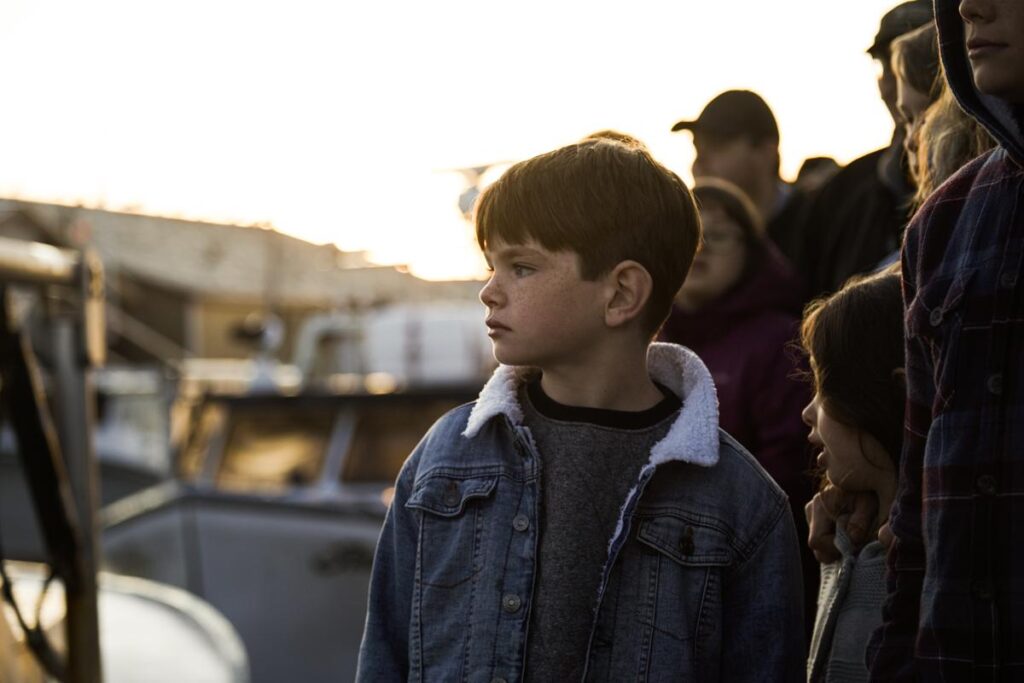
Lobster is wild-caught. The crustaceans are found in the rocky crevices on the shelf of the Gulf of St. Lawrence or the sandy-bottomed Northumberland Strait. The best lobsters thrive in Atlantic Canada, migrating to shallower areas closer to land in spring. The cold, clean waters make for hard shells and succulent meat.
Lobster fishing is by times a perilous profession. Over 1,200 fishers set out early, before dawn, to haul in the catch and re-set the traps. Visitors to seaside cottages on the Island often comment on the low and lulling blub-blub-blub boat sound they report hearing, half asleep, as the crews slip out to sea from many of the Island’s 45 ports.
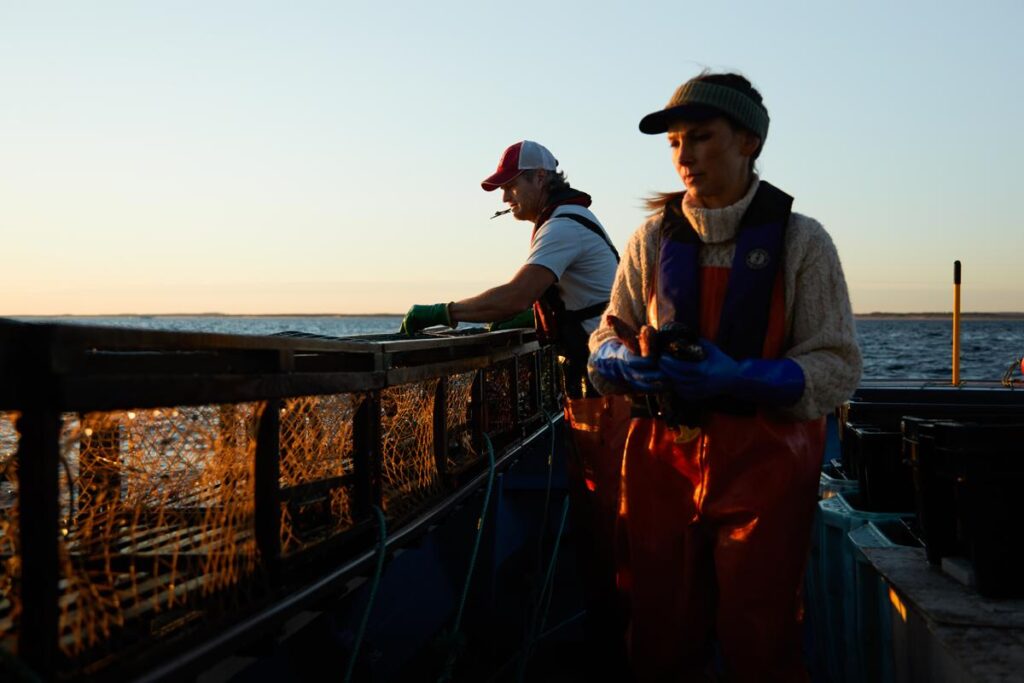
Our lobster fishery is certified sustainable with the Marine Stewardship Council (MSC). This is a globally recognized science-based standard. To ensure lobsters remain healthy and abundant for future generations, the industry is governed by multi-year integrated management plans that vary slightly from region to region. Shellfish, like lobster, take many years to grow, so steps to protect and nurture the stock include strict size minimums, a limited number of fishing licences, a short season and detailed specifications on traps.
Lobster is iconic. People from around the world recognize PEI’s as among the very best. The industry here generates good jobs, supplies a world-class product and maintains a rhythm of traditions that have contributed immeasurably to our identity and quality of life.
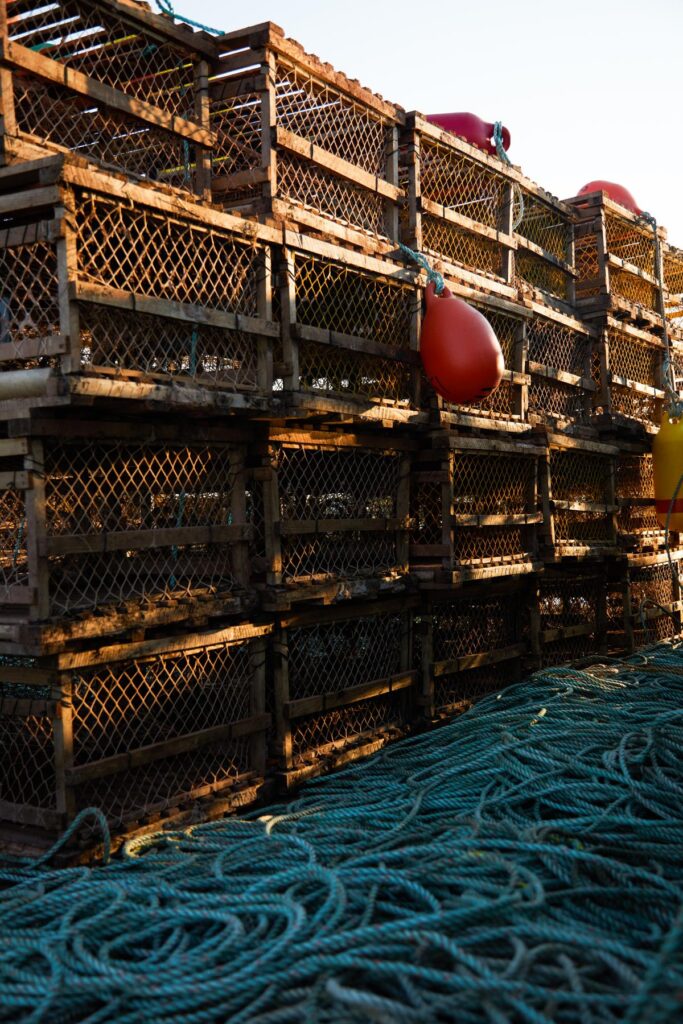
The lobster trap itself is iconic. In some areas, fishers have switched from using traditional oval-topped traps with intricately woven twine sides to rectangular traps made of wood and woven twine, which are larger and heavier to withstand strong currents and tides. Regardless of shape, traps are designed to let small lobsters pass through. When visiting the Island, look up at a seaside restaurant or in the rafters at the barn ceilidh. Wherever there’s a fiddle and great seafood, retired lobster traps are usually nearby.
PEI lobster is fished in spring and fall, but only 25 percent of the harvest is in the latter. The short spring season is, therefore, a bustle of activity at ports around the Island. Fewer boats ply the waters as the days shorten into October, but the combination of seasons accounts for 15 percent of Canada’s annual lobster production.
To ensure a sustainable fishery, lobster fishers measure the upper shell (carapace) of each lobster and return the juvenile catch to the sea. The lobster claws are then banded (for the lobster’s own safety!) and set in trays for inspection and transfer to the buyer on shore.
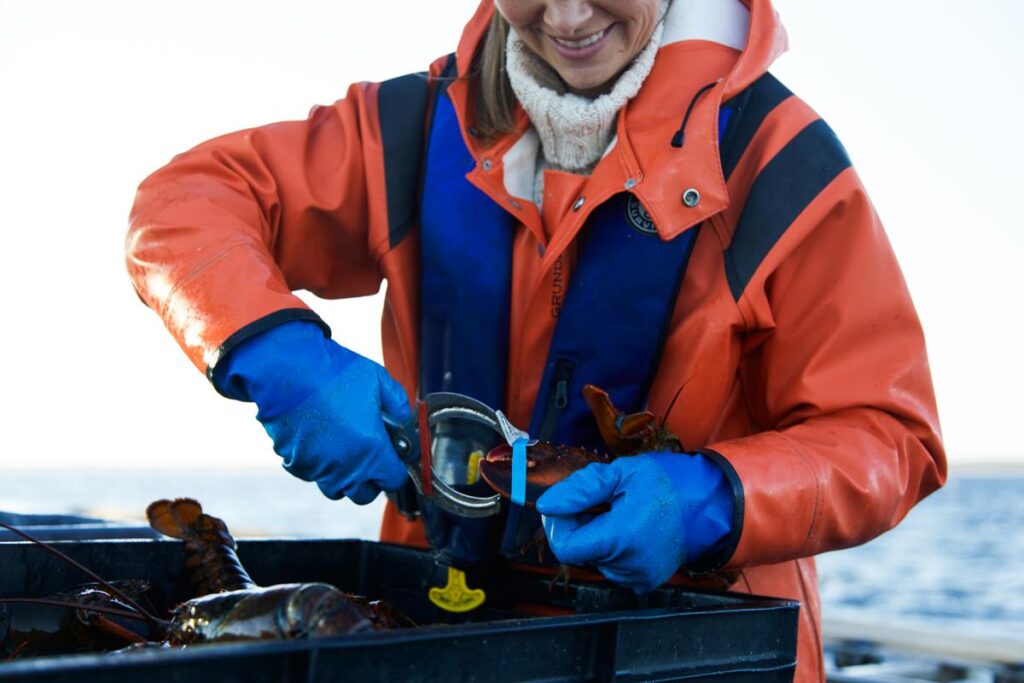
PEI lobsters are either “canners” or “markets,” with the annual catch evenly divided. Canners are smaller lobsters and are preferred by true connoisseurs for their tender texture and more subtle flavours.
How to Prepare Lobster
tips + tricks: Cook a live lobster
| Weight | Cook Time |
| 1 lb | 10-12 mins |
| 1 ¼ lbs | 11-13 mins |
| 1 ½ lbs | 12-14 mins |
| 1 ¾ lbs | 13-15 mins |
| 2 lbs | 17 mins |
| 2 ½ lbs | 22 mins |
- Bring a large pot of cold, salted water to a boil.
- Remove bands from lobsters and place into boiling water.
- When water returns to a rolling boil, start timer to cook lobsters for allotted time.
- Remove from cooking water and place into a salted ice bath to stop the cooking process.
- When cool enough to handle, remove lobster meat from shells and enjoy.
Chef’s tip:
The lobster is done cooking when the antennae pull out easily. The suggested guidelines above are approximate times for cooking one lobster or a few lobsters at the same time. For cooking time, use the weight of the individual lobster, not the total weight of all lobsters. If cooking subsequent batches, remember to bring water back to a rolling boil prior to cooking the next batch. If not eating right away, refrigerate lobsters belly up to keep in all the juices. Lobsters can be kept in refrigerator for up to two days in an air-tight container.
tips + tricks: How to crack open a cooked lobster
- Twist the tail
- Cut or crack open the tail
- Twist the claws
- Cut or crack the claws open
- Remember the legs and body contain meat
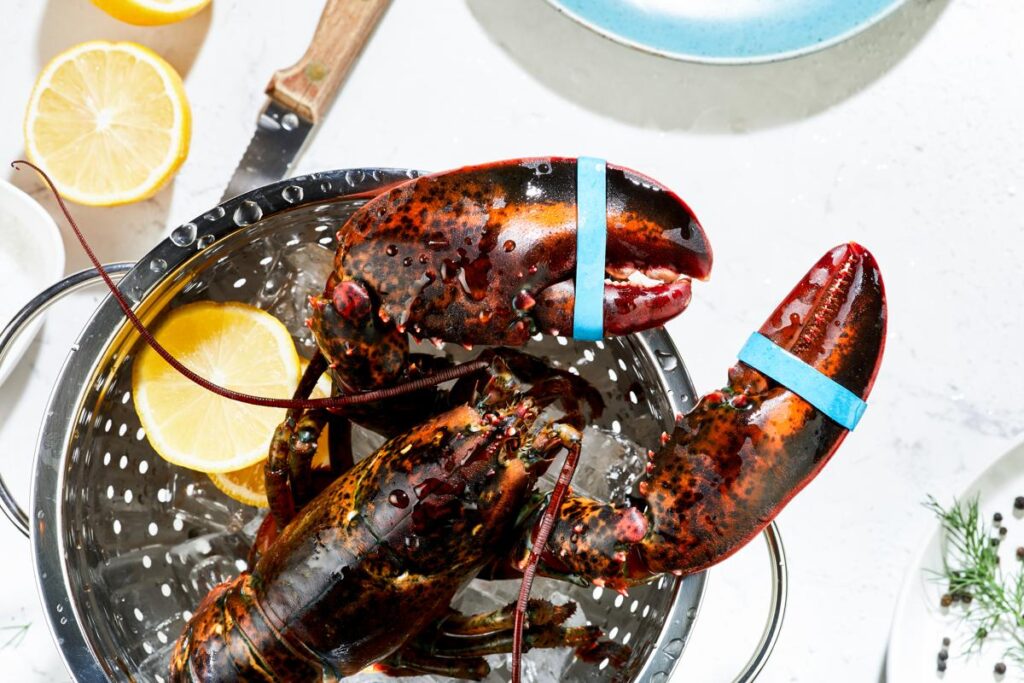

Lobster & Mussel Chowder with Baby Red Potatoes
Lobster Roll with Lemon Aioli & Dill
Lobster Roll with Browned Butter & Chives

Text, photographs and recipes excerpted from Canada’s Food Island: A Collection of Stories and Recipes from Prince Edward Island by Farmers and Fishers of Prince Edward Island. Photography by Stephen Harris. Stories and captions by Stuart Hickox. Copyright © 2022 by Lobster Fishers of PEI. Excerpted with permission from Figure 1 Publishing. All rights reserved. No part of this excerpt may be reproduced or reprinted without permission in writing from the publisher.


